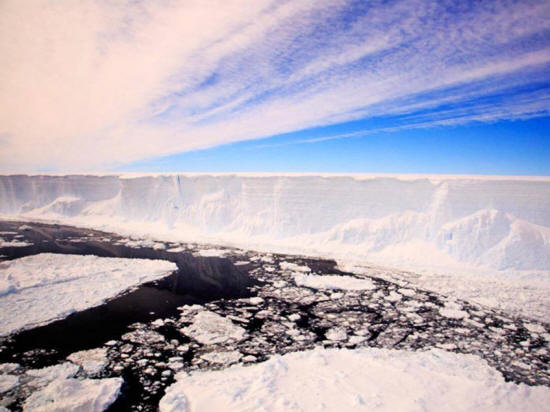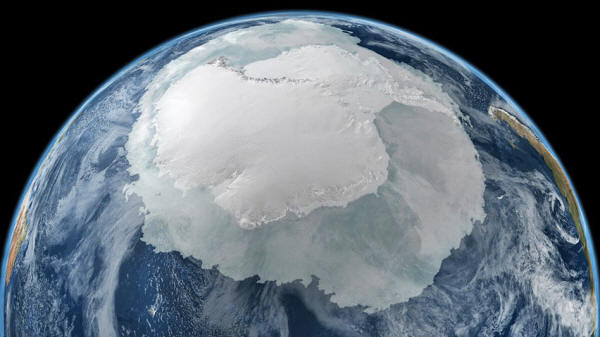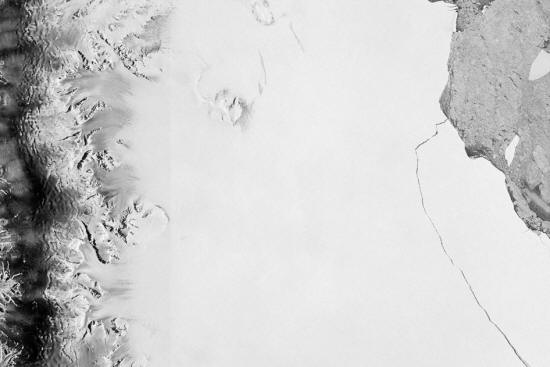|

February 15,
2018
from
Ancient-Code Website
Italian version
Spanish version

It's a rare opportunity
to explore a hidden alien ecosystem.
Image Credit: BAS
A mysterious ancient seabed that has remained in total isolation for
more than 120,000 years is set to be explored by researchers.
A team of scientists is heading towards Antarctica in order to
explore a region that has remained covered in ice for more than
120,000 years.
This rare opportunity
came after an
iceberg known as A68 - four times
the size of London - broke from the
Larsen Ice Shelf in 2017, exposing
an alien world that has never before been explored by scientists.
This is a never-before-seen rare opportunity that will allow experts
to study an alien ecosystem that is about 6,000 square kilometers in
size.
When the massive block of ice moved, it revealed a region that had
not seen the light of day for a long time, and now experts will
delve into its mysteries and begin searching for any life that may
have remained trapped there.
Speaking about this rare opportunity, BAS marine biologist Katrin
Linse said
to The Independent:
"We don't know
anything about it, it has been covered by an ice shelf that is
several hundred meters thick."
"It's important we
get there quickly before the undersea environment changes as
sunlight enters the water and new species begin to colonize."
During the exploration
which is planned to last for three weeks, seabed animals, microbes,
plankton, sediments and water samples will be collected, in addition
to documenting the evidence of new marine mammals or birds that may
have migrated to the exposed waters.
While their plane is spot on, researchers acknowledge that they
really do not know what to expect when they get there.
"We need to be bold
on this one," says BAS science director David Vaughan.

Antarctica as seen from Space.
Image Credit: NASA.
"Larsen
C is a long way south and there's lots of sea ice in
the area, but this is important science, so we will try our best
to get the team where they need to be."
Source
This trip represents a
unique and unprecedented opportunity for scientists to look into an
isolated region on Earth that has never before been explored.
"We're going into an
area where we don't know what we're going to find, and this is
an exciting thing," Linse
told BBC News Radio.
"I expect to find animals similar to animals we find in the
extreme deep sea, so animals that are not used to feeding on
green food, because there was no phytoplankton in the water
above…
We don't know until
we've seen it."

A lump of ice
more than twice the size of Luxembourg
broke off the Larsen-C ice shelf,
spawning one of the largest icebergs on record
and changing the outline of
the Antarctic Peninsula forever,
on July 12, 2017.
(European Space Agency via Getty Images)
All of the researchers
taking part in the new survey are aware of the importance of their
mission since observational windows like this one sometimes take
more than 100,000 years to open.
"I cannot imagine a
more dramatic shift in environmental conditions in any ecosystem
on Earth," says Julian Gutt, a marine ecologist at the Alfred
Wegener Institute for Polar and Marine Research in Bremerhaven,
Germany - one of the participating institutions on this voyage.
Source
As noted by the
Independent, besides studying any life that may be inhabiting the
region, climate scientists will try and establish whether or not the
breaking apart of the Larsen Ice Shelf was induced by climate
change...
|




